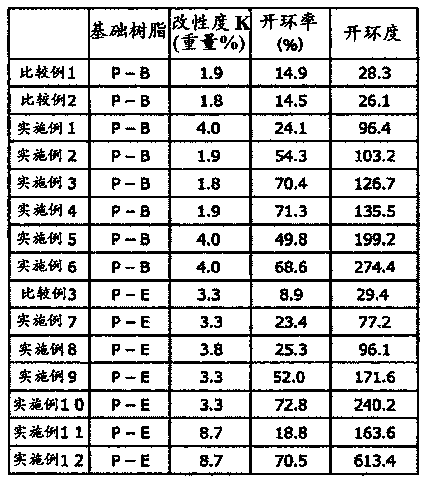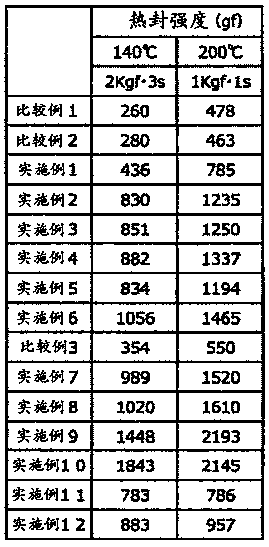Modified polyolefin resin
A polyolefin resin, modification technology, applied in the field of modified polyolefin resin, can solve the problem of solution stability reduction
- Summary
- Abstract
- Description
- Claims
- Application Information
AI Technical Summary
Problems solved by technology
Method used
Image
Examples
preparation example Construction
[0088] The preparation method of the modified polyolefin resin of the present invention is not particularly limited. An example is shown below.
[0089] First, polyolefin resin is prepared. Polyolefin resin can be obtained by adding α-olefins such as ethylene, propylene, 1-butene, 1-pentene, 1-hexene, 1-heptene, 1-octene to Ziegler-Natta catalyst or metallocene catalyst Prepared by polymerization in the presence of a catalyst. A commercial item can also be used for a polyolefin resin.
[0090] Next, the polyolefin resin is modified with a modifying component. The modification method can be performed by a known method, for example, a graft polymerization method. During graft polymerization, free radical initiators can also be used. As a method for obtaining a modified polyolefin resin, there may be mentioned: a solution method in which a modified component is heated and dissolved in a solvent such as toluene, and a radical initiator is added; Melt kneading method in which...
Embodiment 1
[0134]In a four-necked flask equipped with a stirrer, a cooling tube, and a dropping funnel, 100 parts of propylene-butene random copolymer [P-B] (80 mol% propylene component, 20 mol% butene component, Tm =85°C) was heated and dissolved in 400g of toluene. The temperature in the system was kept at 110°C, and while stirring, 4.5 parts of maleic anhydride, 4.0 parts of dodecyl methacrylate, and 1.0 parts of di-tert-butyl peroxide were added dropwise for 3 hours, and then The reaction was carried out for 1 hour.
[0135] After completion of the reaction, it was cooled to room temperature to obtain a reactant having a weight average molecular weight of 160,000 and Tm=82°C. The reactant was purified by pouring into a large excess of acetone, and the graft weights of maleic anhydride and lauryl methacrylate were measured and found to be 4.0% by weight and 3.0% by weight, respectively.
[0136] The reactant was left to stand at constant temperature and humidity (50° C., 100% RH) fo...
Embodiment 2
[0138] Except being 2.0 parts of maleic anhydride, 2.0 parts of lauryl methacrylate, and 0.8 parts of di-tert-butyl peroxide, the reaction was carried out in the same manner as in Example 1 to obtain a molecular weight of 150,000 and Tm=83 °C, the grafted amounts of maleic anhydride and lauryl acrylate were 1.9% by weight and 1.8% by weight of reactants, respectively.
[0139] The reactant was left to stand at constant temperature and humidity (50° C., 100% RH) for 16 hours to obtain a modified polyolefin resin with a ring opening rate of 54.3%, that is, a ring opening degree of 103.2.
PUM
 Login to View More
Login to View More Abstract
Description
Claims
Application Information
 Login to View More
Login to View More - Generate Ideas
- Intellectual Property
- Life Sciences
- Materials
- Tech Scout
- Unparalleled Data Quality
- Higher Quality Content
- 60% Fewer Hallucinations
Browse by: Latest US Patents, China's latest patents, Technical Efficacy Thesaurus, Application Domain, Technology Topic, Popular Technical Reports.
© 2025 PatSnap. All rights reserved.Legal|Privacy policy|Modern Slavery Act Transparency Statement|Sitemap|About US| Contact US: help@patsnap.com


